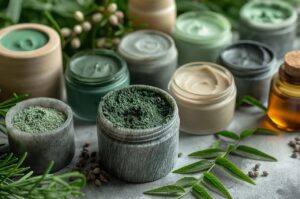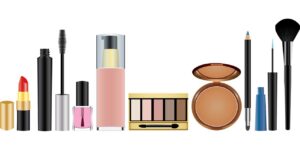In the dynamic realm of beauty and personal care, the handmade cosmetics sector shines with its emphasis on creativity, sustainability, and individual expression. Offering a refreshing alternative to mass-produced items, handmade cosmetics blend artistic flair, skillful craftsmanship, and ethical principles. Exploring this industry introduces participants to a world where each product has a story, every formulation is made with passion, and authenticity is highly valued.

This overview delves into the distinctive features, historical roots, and diverse aspects of the handmade cosmetics field. From artisanal craftsmanship to environmentally friendly practices, it embodies a comprehensive approach to beauty that resonates with consumers seeking more than just skincare or makeup. It invites individuals to partake in self-care rituals that nurture both the body and the spirit.
Exploring the handmade cosmetics industry reveals a tapestry of dedicated artisans, forward-thinking entrepreneurs, and discerning consumers who collectively enrich its landscape. This examination underscores fundamental principles, notably the utilization of natural constituents, adherence to sustainable methodologies, and the espousal of ethical procurement practices.
Embarking upon this scholarly expedition into the realm of handmade cosmetics delineates a convergence of traditional deep dives into the world of handmade cosmetics and ingenuity, wherein the craftsmanship of beauty intertwines with steadfast commitment, yielding products that epitomize the enduring allure of authenticity. Irrespective of one’s vocation as an aspiring entrepreneur, an inquisitive consumer, or a connoisseur of natural aesthetics, the sphere of handmade cosmetics presents an enriching tapestry awaiting exploration and appreciation.
In the ever-evolving landscape of beauty and self-care, handmade cosmetics stand as a testament to the artistry, innovation, and individuality that define this industry. From ancient civilizations to modern-day enthusiasts, the journey of handmade cosmetics is rich with history, progress, and challenges, yet it continues to shape the way we perceive and engage with beauty.
The roots of handmade cosmetics trace back to ancient civilizations, where natural ingredients were utilized for skincare, adornment, and religious ceremonies. Civilizations like ancient Egypt, Greece, and China incorporated ingredients like olive oil, honey, and various herbs into their beauty rituals. These practices not only enhanced physical appearance but also held cultural and spiritual significance.
Fast forward to the Middle Ages and Renaissance periods, where apothecaries and alchemists played pivotal roles in developing cosmetics and perfumes. The Renaissance era saw a resurgence of interest in beauty and grooming, leading to the creation of more sophisticated formulas and techniques.
The Industrial Revolution brought about mass production and commercialization of cosmetics, but it also sparked a counter-movement towards natural, handmade products. This resurgence gained momentum in the late 20th century, fueled by concerns about synthetic ingredients and environmental impact.
In recent decades, handmade cosmetics have experienced a renaissance driven by factors like sustainability, personalization, and a growing demand for transparency in ingredients.
Small-scale artisans and independent brands have emerged, offering handmade products crafted with care and creativity.
Advancements in technology have also played a role, enabling artisans to reach wider audiences through e-commerce platforms and social media. Digital platforms provide a space for artisans to showcase their craftsmanship, share their stories, and connect with like-minded consumers.

The current landscape of handmade cosmetics is characterized by a diversity of products, ingredients, and aesthetics. Natural and organic ingredients remain popular, with consumers seeking products free from harsh chemicals and additives. Ethical sourcing, cruelty-free practices, and sustainable packaging are also key considerations for many consumers. Personalization is another prevailing trend, with artisans offering bespoke formulations tailored to individual preferences and skin types. Customization extends beyond product formulation to packaging and branding, allowing consumers to express their unique style and values.
Innovation is driving the development of new formulations and techniques, from waterless skincare to zero-waste packaging solutions. Collaborations between artisans and other industries, such as food and wellness, are also on the rise, inspiring new product concepts and experiences.
Despite the growing popularity of handmade cosmetics, artisans face challenges such as regulatory hurdles, scalability, and competition from larger corporations. Ensuring product safety and compliance with regulations can be daunting for small-scale producers, requiring investment in testing and certification.
Maintaining consistency in quality and supply chain management is another challenge, especially as demand fluctuates and sourcing natural ingredients becomes more complex. Pricing is also a consideration, as handmade cosmetics often come with a higher price tag due to the craftsmanship and premium ingredients involved.
Furthermore, standing out in a crowded market requires effective branding, marketing, and distribution strategies. Building brand loyalty and trust is essential for artisans to compete with larger, more established brands.
Handmade cosmetics embody the intersection of art, science, and sustainability, offering consumers a personalized and authentic alternative to mass-produced beauty products. With a rich history, ongoing innovation, and commitment to craftsmanship, handmade cosmetics continue to shape the future of beauty, inspiring individuals to embrace their unique beauty rituals and values.
The wearing of cosmetics and perfumes by both men and women goes back a very long way indeed as the ancients were just as keen as anyone to improve their appearance as quickly and as easily as possible using all manner of powders, creams, lotions, and liquids. Written and pictorial records combine with remains of the materials themselves to reveal how the ancients not only improved their looks and smell but also tried to cure such irritating challenges to one’s vanity as baldness, grey hairs and wrinkles. In many ancient cultures, cosmetics and perfumes also had a close connection with religion and rituals, especially the burial of the dead.
In the ancient world, particularly in Egypt, the emphasis on cleanliness and aesthetics was deeply entrenched in cultural and religious practices. The Egyptians, irrespective of social status, held a profound belief in the significance of maintaining purity of body and soul, a principle that extended even beyond the realm of the living into death. Cosmetics, therefore, played a multifaceted role, not merely as tools for enhancing appearance but as vehicles for spiritual connection and reverence for the divine.
The association between cosmetics and the divine was evident in religious rituals, where priests ceremoniously anointed statues of gods with fragrant oils and adorned them with makeup. This divine connection also manifested in the production of cosmetics within temple precincts, notably at revered sites such as Karnak, where the crafting of scented oils and the creation of various cosmetic concoctions were integral to religious practices. Archaeological evidence provides compelling insights into the extensive use of cosmetics in ancient societies, particularly in Egypt. From the iconic eyeliner and eye shadow worn by prominent figures like Tutankhamun and Nefertiti, crafted from minerals like green malachite and black galena, to the inclusion of cosmetics in burial goods as essential items for the afterlife, the cultural significance of cosmetics permeated every aspect of Egyptian life.
Moreover, cosmetics in ancient Egypt served not only aesthetic purposes but also possessed medicinal properties. Various formulations, ranging from moisturizers made from natural fats and oils to lotions infused with natron and ash for skin cleansing, underscored the holistic approach to skincare prevalent in ancient times.

Luxury ingredients like frankincense and myrrh were highly prized commodities, valued not only for their exquisite fragrances but also for their therapeutic properties. Obtained from distant lands such as Yemen and Somalia, these precious substances were utilized not only in perfumes but also in skincare and medicinal treatments, reflecting the ancient Egyptians’ keen understanding of the natural world and its healing properties.
Containers for cosmetics, ranging from simple reed tubes to intricately crafted vessels made from colored glass or stone, were indicative of the high regard placed on these products. Their inclusion in burial goods, alongside other personal essentials like mirrors and grooming tools, attested to the belief in the continuity of beauty and self-care beyond the earthly realm.
Across the Mediterranean, from Greece to Rome, the tradition of using cosmetics and perfumes persisted, with each culture imparting its unique customs and practices. In Greece, cosmetics were not only employed for aesthetic enhancement but also held ritualistic significance, with rouge, whitener, and eyeliner being commonplace among women. Similarly, in Rome, cosmetics were predominantly associated with women, although men also engaged in certain grooming practices.
Despite the potential risks associated with certain cosmetic ingredients, such as lead-based pigments, ancient societies demonstrated a remarkable adaptability and resourcefulness in their skincare and beauty regimens. Ingredients were selected not only for their cosmetic properties but also for their potential therapeutic benefits, underscoring the interconnectedness of beauty, health, and spirituality in the ancient world.
 During Late Antiquity, the Byzantines upheld the cosmetic practices inherited from earlier civilizations, with both men and women engaging in various beauty rituals. Historical records attest to the use of hair dyes, with some unconventional methods such as utilizing boys’ urine believed to have remarkable effects. Additionally, preparations for hair removal, moisturizing lotions, and cosmetics for facial enhancement were commonly employed by Byzantine individuals. Women, in particular, whitened their faces, adorned their lips with paint, and accentuated their eyes, mirroring the cosmetic traditions of their predecessors in the Western Roman Empire.
During Late Antiquity, the Byzantines upheld the cosmetic practices inherited from earlier civilizations, with both men and women engaging in various beauty rituals. Historical records attest to the use of hair dyes, with some unconventional methods such as utilizing boys’ urine believed to have remarkable effects. Additionally, preparations for hair removal, moisturizing lotions, and cosmetics for facial enhancement were commonly employed by Byzantine individuals. Women, in particular, whitened their faces, adorned their lips with paint, and accentuated their eyes, mirroring the cosmetic traditions of their predecessors in the Western Roman Empire.
The Byzantines’ meticulous attention to appearance sometimes led to unfair perceptions in Western Europe, where they were occasionally viewed as indulgent and overly concerned with luxury. However, it’s worth noting that Byzantine Christian preachers occasionally admonished their followers for excessive vanity. Archaeological findings, including crucibles, containers, applicators, and spoons, serve as tangible evidence of the widespread use of cosmetics during this period. Both Byzantine and Late Roman societies displayed a penchant for luxury, reflected in the intricately crafted caskets used to store cosmetics. One notable example is the Muse Casket of the Esquiline Treasure, discovered in Rome in 1793 CE and dating back to the 4th century CE. This silver casket, adorned with engraved images of the Muses, contains compartments for storing unguents and perfumes, showcasing the Byzantines’ appreciation for both beauty and craftsmanship.

The worldwide cosmetics business is a reflection of societal development. Cosmetics were mass-produced in the early 1900s using machineries and factories. Around that time, companies that produced cosmetics started to appear, including Elizabeth Arden (1910), MaxFactor (1909), Maxa Rubinstein (1903), and Princess Pat (1907). Capitalism drove the mass manufacture and promotion of cosmetics in the first ten years of the 1900s. American ladies consumed just one out of every five cosmetics. But eventually, this unending supply and consumption began to show weaknesses. Global warming has been brought on by the pollution from large companies throughout the years, and new food-related illnesses have been linked to the presence of dangerous chemicals in cosmetics.
Nowadays, consumers are more conscious of the negative aspects of these constraints brought about by contemporary consumerism, such as how they endanger their own health as well as the environment. Customers began searching for a more sensible approach to purchase items. Consumers respond negatively to the risks associated with industrial
cosmetics, according to a 2009 Packaged Facts industry research. As a result, there is an increasing need for goods that are clearer and safer (Armstrong, 2009).According to Featherstone (2007), consumption is no longer limited to being spontaneous, hedonistic, and expressive. The “labelling of products contents” trend in the late 1990s is a prime illustration of it. A campaign was started by European consumers demanding that food manufacturers list the contents of their goods on the labels.
Similar to this, in 2007 “Carbon cost” began labelling items with their contents due to customer demand (Featherstone, 2007). All of these movements show how consumption is frequently directly correlated with the manufacturer, the method of production, the substances utilised, etc.
Based on traditional practices and ethnobotanical wisdom, humans have historically utilized natural resources empirically for skincare and enhancing their physical appearance. However, in recent times, there has been a significant increase in interest in health and skincare, leading to a high demand for certain effective plant extracts. Our skin serves as a barrier between our body and the external environment, functioning as a sensory organ that reflects emotions, feelings, and overall health. While internal organs may not visibly age, the aging of the skin holds significant social importance due to its outward visibility. Skin aging is a result of natural processes over time, compounded by cellular oxidative stress. Accelerated aging, on the other hand, is influenced by various environmental factors such as UV radiation, chemicals, and climatic conditions, leading to the production of reactive oxygen species (ROS) that damage cellular components. These factors are crucial for understanding the present and future of skincare and beauty products, as there is a growing emphasis on not only looking good but also delaying aging and preventing illness. The demand for non-toxic and hypoallergenic products has surged, particularly since hazardous chemicals like mercury, lead, and arsenic, once used for skin bleaching and firming, were banned due to their toxicity. Confidence in skin çare products also hinges on packaging, with botanical names often misspelled or inaccurately written. Concerns about animal-derived products, exacerbated by epidemics like “mad cow” disease and “bird flu,” have prompted a shift towards green, organic, or natural cosmetics derived from plants, perceived as harmless. The concept of “phytosomes,” nanocompounds surrounded by a layer of phospholipids for enhanced skin absorption, emerged in 2007. Research has also explored the botox-like effects of the fungus Fomes officinalis, while advancements in biotechnology allow for the cultivation of plant meristem cells from common apple trees to produce secondary metabolites, potentially minimizing environmental damage. However, challenges persist, such as the conservation of species like the argan tree, endemic to Morocco, whose oil demand has threatened its population.
